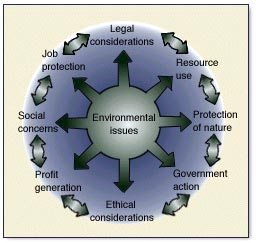Environmental Issues in Vietnam
Vietnam is among the most biologically diverse countries on earth, comprising less than 1 percent of the world's land but about 10 percent of its species. But the report noted that its protected areas are suffering from deforestation and habitat loss.
Lowest ranking nations on environmental sustainability index: 1) Madagascar; 2) Bangladesh; 3) Uganda; 4) Nigeria; 5) Iran; 6) Vietnam; 7) Malawi; 8) Senegal; 9) Singapore; 10) Algeria. [Source: Yale Center for Environmental Law and Policy]
Oil slicks, dead rivers and polluted air are among the environmental problems that Vietnam faces as it industrializes and develops. According to a survey of expatriates living in Asia, India, China, Vietnam, the Philippines, Indonesia and Hong Kong are regarded as the dirties countries in Asia, while Singapore, Japan and Malaysia were regarded as the cleanest. Thailand, South Korea and Taiwan were in the middle.
An Asian Development Bank (ADB) report in 2009 stated: "Vietnam has one of the highest chemical input use rates among countries in Asia and the Pacific. Each year an estimated 73 million tons of livestock waste are disposed of improperly into ponds, channels, and sewers, or left in fields, eventually polluting the surrounding areas. Wastewater samples taken from livestock farms indicated that about 90 percent do not meet the applicable industrial wastewater discharge standards, especially with regard to biological oxygen demand and chemical oxygen demand levels."
The National Environmental Agency, a branch of the Ministry of Science, Technology, and Environment, is responsible for environmental protection. At the provincial level, the Departments of Science, Technology, and the Environment bear responsibility. Non-governmental organizations, particularly the Institute of Ecological Economics, also play a role. Urbanization, industrialization, and intensive farming are having a negative impact on Vietnam’s environment. These factors have led to air pollution, water pollution, and noise pollution, particularly in urban and industrial centers like Ho Chi Minh City and Hanoi. The most serious problem is waste treatment. Land use pressures have led to significant environmental problems, including severe deforestation, soil erosion, sedimentation of rivers, flooding in the deltas, declining fish yields, and pollution of the coastal and marine environment. The use of Agent Orange by the U.S. military in the Second Indochina War (1954–75) has had a lingering effect on Vietnam in the form of persistent environmental contamination that has increased the incidence of various diseases and birth defects. [Source: Library of Congress]
China, India, Bangladesh and Vietnam have toxic waste import bans. DDT was still used in 1999 in part because it is effective in controlling mosquitos that carry the malaria parasite. In rural areas recycling has traditionally not been necessary in the modern sense as villagers tended to throw away very little and find ingenious uses for mundane things such as plastic bottles and bags.
See Legacy of Agent Orange
Global Warming in Vietnam
The Mekong and Red River Deltas are threatened by rising sea leveled caused by global warming and problems associated with this such increased flooding and salt intrusion. Carbon dioxide emissions from consumption of energy: 112.8 million Mt (2010 est.), country comparison to the world: 38.










